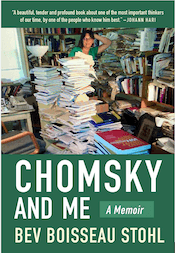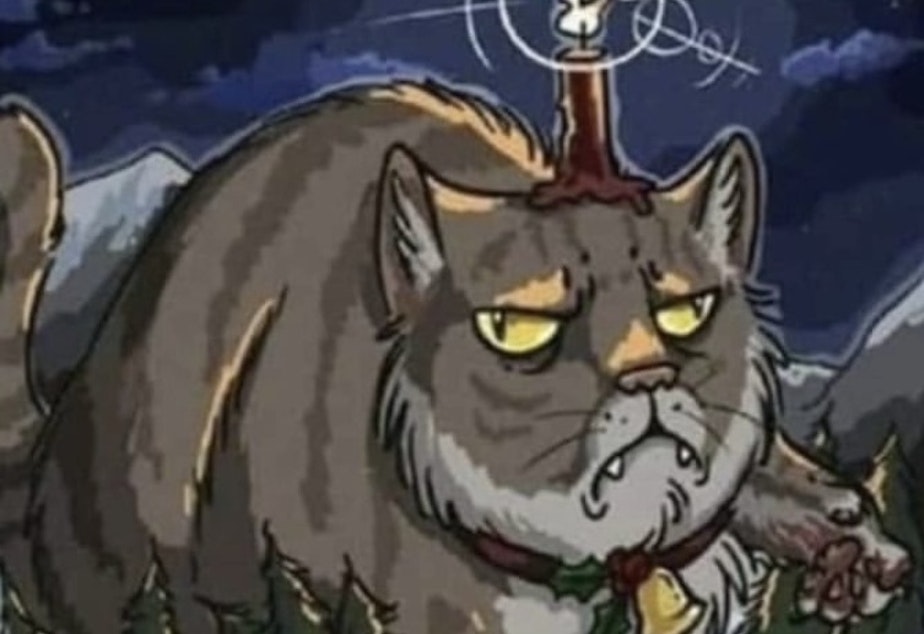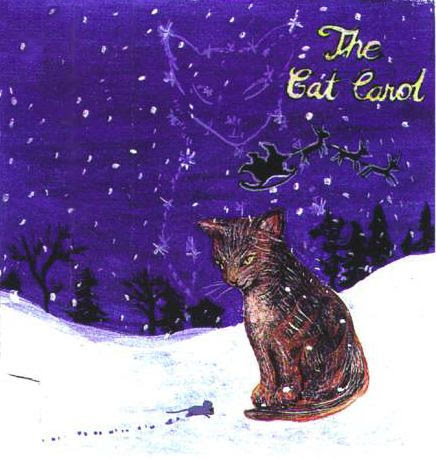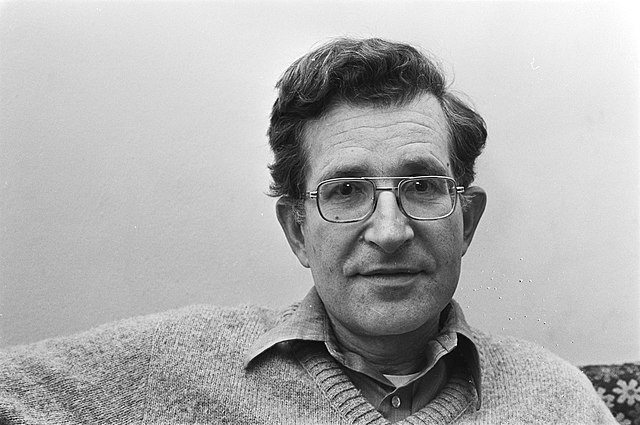Bev Stohl ran the MIT office of the renowned linguist and social critic Noam Chomsky for nearly two and a half decades. This is her account of those years, working next to a man described by the New York Times as “arguably the most important intellectual alive today.”
Stohl’s memoir, Chomsky and Me [OR Books, 2023] is casually anti-intellectual – not out to Tell All about the inner workings of Noam’s genius — and intentionally sets out, through anecdotes and descriptions of their everyday doings at the office, and on overseas trips, to present human beings at work in activities they hope will make the world a little by their doings. There is no hero worship, but solid, honest observations of a lifestyle nestled in the embrace of integrity and care.
Hawkins: A memoir is often fraught with difficult writerly choices — what to put in and what to leave out. Chomsky and Me is both protective of Chomsky and illuminating about you. What was your motivation for writing this memoir? And what are some of the choices you had to make?
Stohl: A memoir, like any book, can be written a million different ways. It feels to me that I wrote seven hundred versions of Chomsky & Me, asking myself in each chapter and each paragraph, in each iteration, is this the story I want to tell? Is this the most important detail? My motivation for writing this memoir was simple. I see the world through a writer’s lens, so within months of taking the job as Chomsky’s assistant I saw what was going on in our office, what kind of man he was, what types of people met with him or invited him to lecture. I noticed small quirks about his work style, and larger characteristics of his personality, his interaction with all kinds of visitors, talk organizers, colleagues, students, staff. I worried that the details of our daily lives might be lost, so I assigned myself to be note keeper, writing pages of essays and scribbling on sticky note pads.
In 2012, after traveling with Noam and my partner Laura to Pavia, Italy, I began posting stories on my blog, “Bev Stohl’s Stata Confusion”. An unintended outcome of this was the comments from activists telling me that seeing Noam as a human being rather than the deity many worshipped—a man who spent time with family, friends, in his garden or on the pond—gave them permission to bring more balance to their own lives. I made an intentional choice to shine the light on the human side of Noam and others like him, because activists are historically plagued by burnout. The blog eventually grew into a book. I wanted to title it, Chomsky and Me: Our World Through Progressive Lenses, but the publisher nixed it.
I wrote about how he handled adversity, and welcomed diversity, and my joy at the sense of playfulness and humanity he shared with me, and with his linguistics and social justice contemporaries. I noticed their ability to move from dark to light, from hopelessness to hope, in looping cycles. This was something I hadn’t seen as much in other MIT departments.
I continued to write, edit and re-edit as I developed a wider scope of understanding, and over a decade the focus of my writing changed and refocused. It took years to pare down my writings and find the most salient stories. So many were left out – Kathleen Cleaver’s work with the Black Panthers, how Noam was affected by the poor people knocking on his parent’s door selling rags. Deleting 14,000 words from my final transcript felt like killing off my best friends, but as I took out more personal facts, I saw the emergence of the story I wanted to tell. And my friends are safely tucked away for another story.

Laura, Noam and Bev backstage after a talk at Harvard.
Hawkins: Chomsky has put out to the world over the years that the three main crises humanity should be worried about at this stage are Climate Change, Nukes, and the end of Democracy — all interconnected. Would you agree with this? What might you add?
Stohl: I do agree, but I would also add that there’s a loss of human connection. Noam and I are the kinds of people who talk to strangers on elevators. Kindness, empathy, and connection, all characteristics of our office atmosphere… aren’t these at the core of everything that offers hope in the world? The atmosphere grew organically, no only because of who we were individually, and who we were together, but because of the people whose energy filled our suite. If these were the predominant principles of life, we wouldn’t have any of the other greed-driven issues. Democracy and truth would be a natural state, and the word “gaslighting” wouldn’t be so much a part of the public dialogue.
Hawkins: How did your Catholicism and Noam’s Jewishness meld? Catholics often aim for forgiveness and preparation, while persistence seems fairly characteristic of the Jewish worldview. Your description to Noam of The Act of Contrition was funny and quaint. How did your differences in approaches play out in your relationship with Noam? And who would single out in the public for needing an act of contrition?
Stohl: One of the things Noam and I disagreed on was which was worse, his mother’s infliction of Jewish guilt or my mother’s infliction of Catholic guilt. We dueled back and forth, upping the ante with each story. In the end we called it a draw. To answer your question, Noam is quite persistent and I can be as well, so we were a match there, although his persistence far outweighed mine. I was more likely to take a break for a walk, where he had to be reminded to take care of himself, then re-reminded, then forced. We were, though, a hopeless pair when it came to being too compassionate and letting people in who maybe should have been more closely vetted. Carol Chomsky once became frustrated with us, insisting that a duck could get an appointment with Noam. We countered that we took people at their word when they asked for an appointment. Catholics aim at preparation? I more fly by the seat of my pants, so this doesn’t fit me. Of course we both had to prepare for his trips, our visitors, his local lectures, but I’m not sure that’s a religious thing as much as a survival necessity. Or are you talking about preparation for the afterlife? Religion wasn’t a leading issue at MIT, so there wasn’t a lot of discussion. I did have a strange experience after my mother died, which I hesitated to put in the book for fear people would find me an untrustworthy narrator. Noam had a moving experience in a Colombian forest dedicated to his late wife, Carol, and I think comparing those two experiences was the only time we talked for more than ten seconds about spirituality.
Who would I single out for contrition? I could say the obvious, He Who Shall Not Be Named. I won’t give credence to the person who gave hateful people permission to spout venom and dedicate themselves to shredding hope for a democratic world.
Hawkins: Can you tell how you came to work for Chomsky and what a typical day in his office was like?
Stohl: I applied at the last minute for a different job, as student administrator, but it was offered to someone else hours before my application arrived. The head administrator knew me, and thought I might fit with Noam, whose previous assistant had burned out and quit within a year. I didn’t conceal to anyone during the interview process that Noam had been approached by a news crew a year before to interview me about my “backward talking ability.” My plan was to work at a less complicated job so I could work on a psychology master’s degree, so I took the job when it was offered, thinking I’d be out within a few years. Thinking it would be easy.
On a typical day, Noam came in around ten, after my assistant and I had gone through a few hundred emails, sorting through and answering when appropriate, tacking on notes to the many we’d pass onto Noam. Three days a week his schedule, which I arranged months in advance, was filled with appointments with students, researchers, activists in a thousand domains, faculty, political hopefuls, supporters, detractors, and on and on. Meanwhile more emails arrived asking him to teach a class, give a lecture, host a Q&A, or write statements of support for endless groups, and people showed up unannounced for a handshake, an autograph, or a photo in front of the Bertrand Russell poster. We tried to fit in a ten-minute meeting of our own, and on a good day, we witnessed people looking more empowered, we had some laughs, we felt a little more hope. On a good day we were able to check in about ourselves, maybe take a walk to the farmer’s market. On a fun day, my dog Roxy, dubbed “the cat” by Noam, who appreciated her as our comic relief, tried to steal his lunch, or I was surprised by well-known personalities walking through our door, exposing themselves as mortal human beings. On an interesting day Noam and I argued over the definition of “courage”, whether we could count our thoughts, or whether his black Velcro footwear were sneakers or shoes. The plates were always spinning, whether dealing with the now or the future. I think if you took any office situation and played it on fast forward, you would see us at work.
Hawkins: Chomsky and Me is filled with episodes of loss, for Noam and for you, yet is never hung up on ending, but rather continuing. In the memoir you write:
Inside the church, the music lulled me into moments of solace, moving me away from the heart-felt pain I carried from the accumulated losses of my mother and Laura’s, and Sylvia and Danny. With Roxy sick, I needed this uplifting respite.
And, of course, Noam was dealing with the loss of his long-time wife Carol. In each case, both of you show courage in moving on. Given the catastrophic problems facing humanity, what’s your secret to enduring tragic personal losses in a dilapidating world?
Stohl: I once asked Noam how he kept going, seeing what he saw, knowing what he knew. He said he had no choice but to keep moving forward. Action, even small acts of kindness, quelled anxiety for both of us. I think this was why we loved the atmosphere of our office. People feeling hopeful curiosity about how to fix things walked in eager and excited, and left more energized. That energy hung around, adding to the positive atmosphere. I think we both found respite in little things, little ones. Noam’s extended family, particularly the children, brought him joy, as did the kids and animals in my life. Worrying about the futures of these kids gave us the impetus to keep our revolving door spinning. To be completely honest, I am not always upbeat. The losses get to me, and sometimes I’m cranky. I try to pull myself out of it by “throwing things I love at the negativity.” Walking my dogs helps. Writing helps. Swimming helps. I don’t think a book entitled, “Chomsky and His Cranky Assistant” would sell.
Hawkins: For some of us who grew up in the activist 60s, it feels like everything we loved about the era is falling away, especially protests against The Man. I miss Abbie Hoffman and his street theater and levity more than ever. That’s why I enjoyed reading about you and Chomsky laughing together over both simple and complex agendas. Noam called it “laughing through the tears,” you write. It was a way of acknowledging the absurdity of it all and of dealing with the grief. The current generation seems incoherent in its response to the chaos all around. How do you explain this? Did you ever talk about it with Noam?
Stohl: Without humor, we’re sunk. It’s that simple for me, and I suppose Noam also found it important. He certainly used humor a lot, although I wonder in retrospect whether he made it a point to be funny for my sake. Kind of a self-centered thought, but to some extent it may be true. I don’t tend to agree with you completely re the current generation. I think they’re split – many are more concerned with TikTok and how many “friends” liked  their posts. I remember Noam was dumbfounded at the idea that these kids thought they had 300 friends, when in reality they might have two real friends. He thought it was delusional. On the other hand– I’m going to throw out “half” here, but I may be way off—half the current generation voted more heavily in recent elections than most. Many are going into the fields of environmental engineering and green technology, trying to clean up the mess before it’s too late. They blame the boomers who lost interest, but as we all know, that group is also split. Noam told me each time we had a big election that if people were as involved during the rest of the year as they were during elections, there might be some hope for real change.
their posts. I remember Noam was dumbfounded at the idea that these kids thought they had 300 friends, when in reality they might have two real friends. He thought it was delusional. On the other hand– I’m going to throw out “half” here, but I may be way off—half the current generation voted more heavily in recent elections than most. Many are going into the fields of environmental engineering and green technology, trying to clean up the mess before it’s too late. They blame the boomers who lost interest, but as we all know, that group is also split. Noam told me each time we had a big election that if people were as involved during the rest of the year as they were during elections, there might be some hope for real change.
Hawkins: Moving from Building 20 to the strange Stata complex was something. Noam getting lost. Form imposing on function. The building you two were in looked like a meteor had punched it in the face. Was MIT just messing with Noam’s head? And how come you adjusted so well? Are you messed up in the head?
Stohl: I don’t think MIT was messing with Noam’s head. In fact, I think they were honoring him with the best view in the building – a panorama of the Boston skyline. Although the slanted walls in his office were questionable; Noam had no idea where all of his books would go. But we worked it out. Nobody knew Frank Gehry’s building would fail in the ways that it did – leaking ceilings, crumbling amphitheater stairways. These issues had as much to do with construction as the building’s design. For most, the building did encourage more creativity than a typical boxy building. If Noam and I were messed up in the head, it wasn’t the building’s fault. I think looking at the truth 24-7 messed up his head, and mine by proximity. It may also be true that the Stata Center made craziness slightly more fun.
Hawkins: Can you say more about Noam’s relationship to Howard Zinn? How are they aligned as a legacy couple? And what have we all lost in losing him?
Stohl: Noam and Howard had a lot in common, the most obvious link being their opposition of the Vietnam War, and hands-on involvement in and dedication to the anti-war movement in general, both social activists at every level. Noam said the creative gene, particularly the musical gene, skipped him completely, yet Howard was a talented playwright. Noam told me years ago that he and Howard differed in a few ways, one being that Howard seemed to enjoy his political work, while Noam was an activist simply because the work had to be done. It was glaring when Howard died that Noam was the only one left of the Howard-Roz-Noam-Carol foursome.
Hawkins: You helped produce an animated film about Chomsky: “Is the Man Who Is Tall Happy?” Can you say more about that project?
Stohl: It’s a stretch to say I helped produce it. I did encourage Noam to do it, and I provided support to Michel Gondry, the film’s producer. I set up each interview and phone conversation, and kept his 8mm film refrigerated for months in our office between visits. Gondry sent us several stills of the animation process, one of which is framed and hanging in my guest room at home. Michel made the process a blast. Each time he flew in from Paris for the next few hours of interviews, we crowded around his laptop, laughing and cheering as we watched their conversations transform magically, playfully into animated movement through Michel’s thousands of hand-drawn cells. Plus he used my dog, Roxy, to illustrate a few points about cognition. What’s not to love?
Hawkins: We will one day soon lose Chomsky, our Public Philosopher, at the same time AIs are coming on to help us do our thinking for us. (And it all started with MIT’s interactive psychologist, Eliza!) Where do you see Chomsky’s greatest payment forward — linguistics, coherent thinking, politics, or something else? And what will you leave behind?
Stohl: Any time I think of Noam’s work, I see him walking, sighing, and forging ahead from one issue, lecture, country, to the next. I often think about his dedication and contributions to the fields of linguistics, cognitive science, politics, psychology, philosophy, math, computer science, childhood education, and more, and I worry that he’ll leave us the way he left the office every June, after a year of endless hard work: doubtful that he’d done enough. I hope for a miracle to show itself at the eleventh hour, a positive nod in his direction so that his last breaths on this Earth won’t be sighs of discouragement. And you probably know he’s not a big fan of AI, at least not in terms of it acting as a substitute for human thinking.
What will I leave behind? I hope it matters that I’ve made people laugh, made them feel seen and heard, just as Noam did. I hope I made a difference in a few lives. In terms of Noam’s work, I hope my blog stories, interviews, podcasts, and my memoir, “Chomsky and Me” have successfully chronicled his legacy as the brilliant and caring human being that he is.












